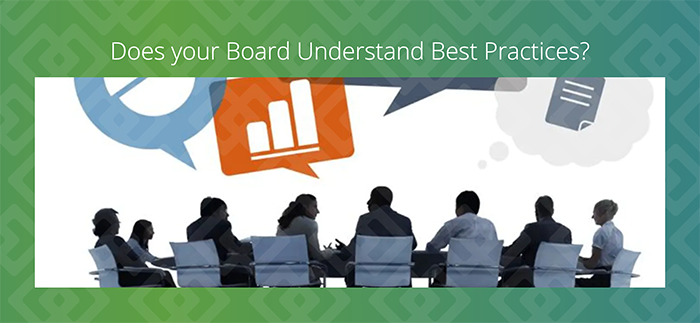A recent article in “Taxation for Exempts” discussed certain best practices for the Board of directors of a not-for-profit entity[1]. The article clearly states that the board of directors has overall responsibility for setting policy and priorities, overseeing compliance and risk management issues and, ensuring that resources are being used wisely to further the organization’s mission[2]. Having served numerous not-for-profit organizations over the past forty-five years, we have observed that the best managed organizations (that is the ones fulfilling its mission year after year) have uniquely qualified members who exercise strong leadership skills. Not-for-profit board members come from different walks of life and varied professions. Generally, they joined the board because they want to contribute in a meaningful way to their profession, industry or society in general. The key to a highly functioning board is to utilize the skills that individual board members offer and to have such members meet certain expectations including regular board attendance and participation, become an advocate for the values and mission of the organization and, be involved in various functions and or committees of the board. Naturally, the organization through the board chair should periodically revisit such expectations and communicate constantly discuss such expectations. And whenever a board member can no longer fulfill their responsibilities they should be encouraged to step down.
The most successful boards have an orientation whereby such expectations are discussed in depth with new board members. Numerous articles have been written about the board orientation so here are just a few matters to consider for orientation:
- A discussion of the mission and vision of the organization and why it is important.
- The history of the organization and how and why it was founded.
- Bylaws and policies and board information as well as attendance requirements.
- Financial statements, tax returns and minutes for the past year or so.
- Board information including requirements for attendance and participation.
- Meeting dates and policies.
At the end of the orientation meeting, the conductor of the orientation should ask new members if they are still interested. Occasionally, some new members will elect not to join the board because too much is expected. Deciding not to join the board should be accepted. No one on the board wants a new member who is not willing or able to participate and commit.
Best practices require regularly scheduled meetings with an agenda, monthly financial statements, an update of activities by the executive who should expect board questions, committee reports and the constant review of the organization’s goals and the willingness to hold management accountable for performance, integrity and ethical behavior.
[1]William Manne, ESQ, Portland Oregon, Taxation for Exempts, November/December 2018.
[2]Ibid.


